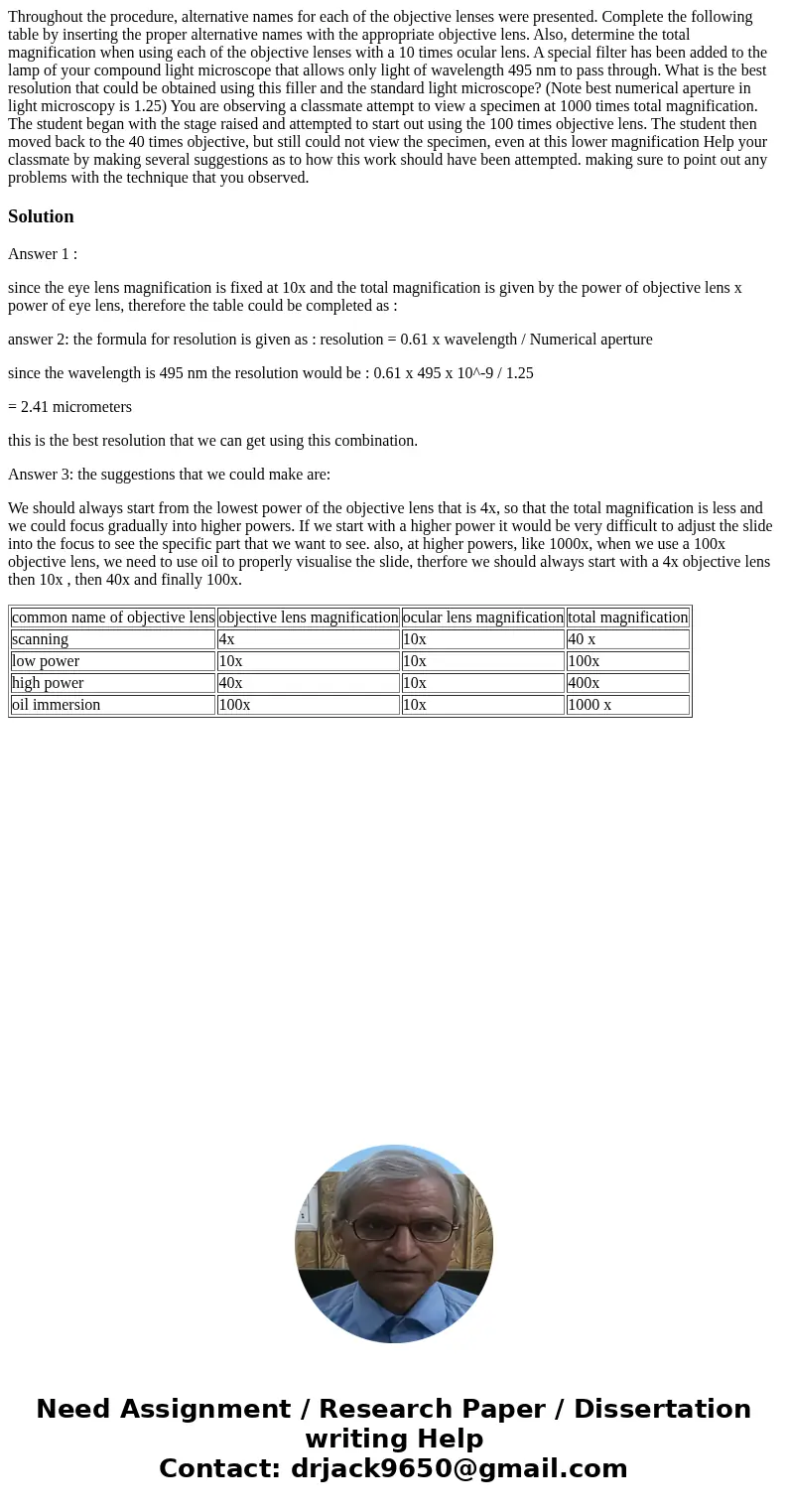Throughout the procedure alternative names for each of the o
Solution
Answer 1 :
since the eye lens magnification is fixed at 10x and the total magnification is given by the power of objective lens x power of eye lens, therefore the table could be completed as :
answer 2: the formula for resolution is given as : resolution = 0.61 x wavelength / Numerical aperture
since the wavelength is 495 nm the resolution would be : 0.61 x 495 x 10^-9 / 1.25
= 2.41 micrometers
this is the best resolution that we can get using this combination.
Answer 3: the suggestions that we could make are:
We should always start from the lowest power of the objective lens that is 4x, so that the total magnification is less and we could focus gradually into higher powers. If we start with a higher power it would be very difficult to adjust the slide into the focus to see the specific part that we want to see. also, at higher powers, like 1000x, when we use a 100x objective lens, we need to use oil to properly visualise the slide, therfore we should always start with a 4x objective lens then 10x , then 40x and finally 100x.
| common name of objective lens | objective lens magnification | ocular lens magnification | total magnification |
| scanning | 4x | 10x | 40 x |
| low power | 10x | 10x | 100x |
| high power | 40x | 10x | 400x |
| oil immersion | 100x | 10x | 1000 x |

 Homework Sourse
Homework Sourse